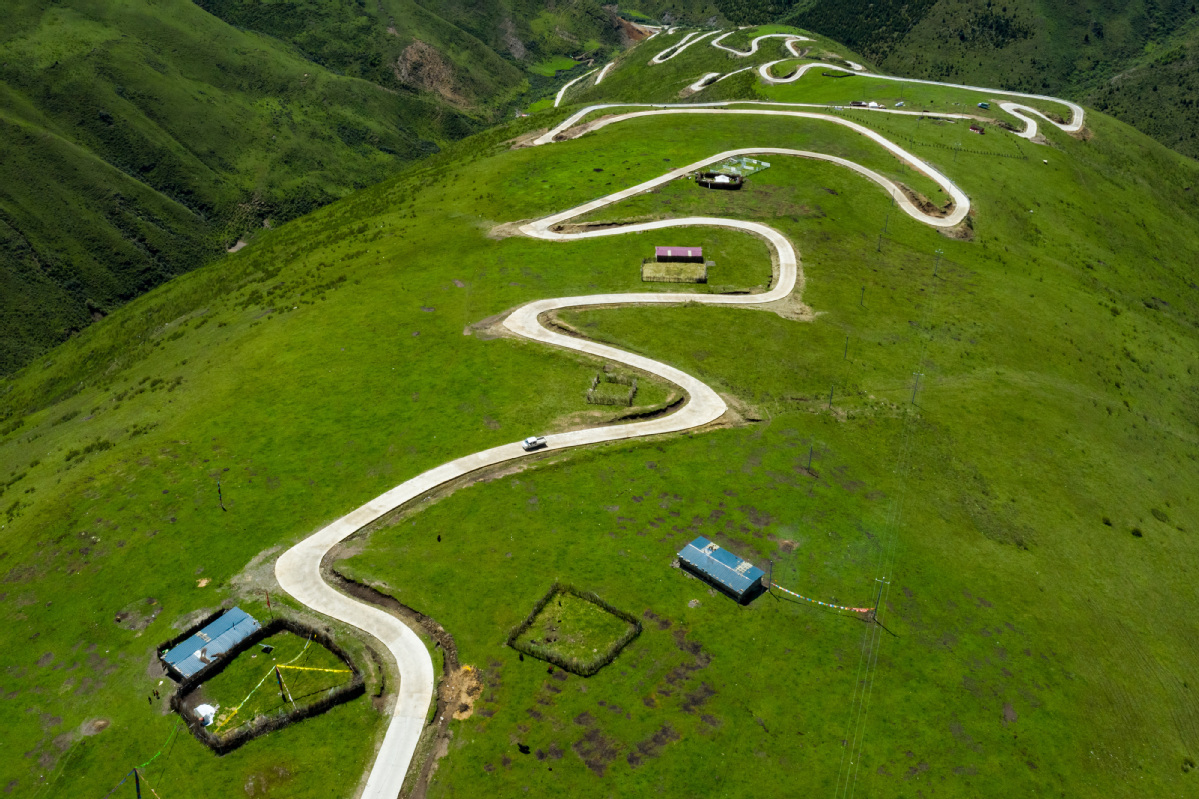Poverty banished by rural road network


All the villages in Aba now have access to paved roads and bus services.
Ministry of Transport official Shu Chi worked as a poverty alleviation liaison official in Aba from 2017 to 2019.
His first task when he arrived in the prefecture was to deal with a car accident in Zamtang, its most remote county.
"It took more than 3 hours to drive from Barkam, the prefecture's capital, to the site," he said.
"As soon as we drove out of Barkam, the road became bumpy and winding. The road was very narrow and it was difficult for cars to pass each other. A river was so close to the road that it felt like there was water running by the wheels."
He told the driver that the road's condition was similar to that in his hometown in Jiangxi province in the 1990s.
"The accident killed a family of five returning from Qinghai. The road was narrow and the driver made a handling mistake, causing the vehicle to fall into the river," he said.
"If the road had been in better condition and if the infrastructure had more safety features, the tragedy might have been avoided."
He said the experience allowed him understand the difficulties faced by the prefecture's residents and spurred him to think about how to use transportation to lift them out of poverty.
Aba was like a "grand construction site" in recent years, Shu said, with infrastructure projects including freeways and national highways launched and completed, building "road arteries and capillaries".
Government surveys found that more than 99 percent of the residents of Zamtang and Heishui were happy with the poverty alleviation project.
Long Shangyun, from Dabakou village in Xiaojin, told Sichuan Daily that it used to take more than 4 hours to walk from his home to the county center.
"Although the county center is at the bottom of the hill, the road down snaked through more than 30 turns," he said.
A 7.4-km mountain road linking the county center and the village was rebuilt and paved in 2018, benefiting more than 200 villagers. It sits at an altitude of 3,000 meters.
"It now takes about 30 minutes to go down the hill to the county center," Long said.
Herder Zenger is among the Zamtang residents who have benefited from the building of a 34-km road in the county.
"Before the construction of the road, milk went bad before we arrived at the market," he told Sichuan Daily.
"We could only sell produce that could be stored longer, such as clarified butter and cheese."
Zenger said he can sell more produce now and earned 12,000 yuan in the summer of 2019.
The improved road network has also attracted visitors and boosted the tourism sector.
Herders have opened family hotels to earn more money.
As the rural road network expands, agricultural produce and local products can be shipped out of the villages, and that helps put money into villagers' pockets.
The development of online shopping has given residents greater opportunities to sell their products, and the expansion of rural roads helps them transport their goods.
A freeway connecting Chengdu, Sichuan's provincial capital, and Barkam that opened in December halved the travel time between them to 3 hours 30 minutes.
By the end of 2019, Aba had 9,788 km of rural roads, accounting for 69 percent of its road network.
The national project to expand China's rural road network saw more than 1.4 million km of rural roads built or rebuilt from 2016 to 2020.
Most villages and towns around the country had access to asphalt roads by the end of 2019, and they were covered by bus services by August last year.
The Ministry of Transport says rural roads now extend for 4.35 million km-comprising about 84 percent of the total road network.
By 2035, the length of the rural road network will exceed 5 million km, according to a development blueprint released by the ministry on March 3.























